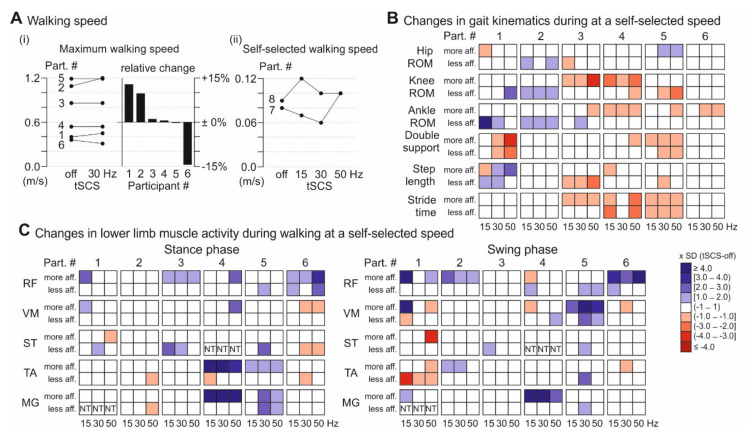Figure 3.
Effect of tSCS on over-ground walking performance. (A) Walking speed assessed on a 7 m track using the FLOAT-BWS system. (i) Absolute maximum walking speed of the six participants (see Section 2.2 Study protocol) completing the assessment during tSCS-off and 30-Hz tSCS, along with relative changes. (ii) Self-selected walking speed across tSCS conditions as indicated of the two participants (see Section 2.2 Study protocol) unable to maintain a constant speed over 7 m (both did not perform maximum walking speed assessment). (B) Changes in gait kinematics during 15-Hz, 30-Hz, and 50-Hz tSCS, given as multiples of the SD of the respective values in the tSCS-off condition (z-scores), and illustrated by the opacity of blue (indicating an increase) and red (decrease) boxes. Shown are data derived from the more and less affected lower limbs of participants 1–6 who walked at a constant self-selected speed across tSCS conditions. (C) Changes in lower limb muscle activation (RMS values) during stance (left) and swing phases (right). MG values of the less affected lower limb of participant 1, and ST values of the less affected lower limb of participant 4 are missing data. BWS, body-weight support; FLOAT, free levitation for over-ground active training; MG, medial gastrocnemius; RF, rectus femoris; ST, semitendinosus; TA, tibialis anterior; VM, vastus medialis.

